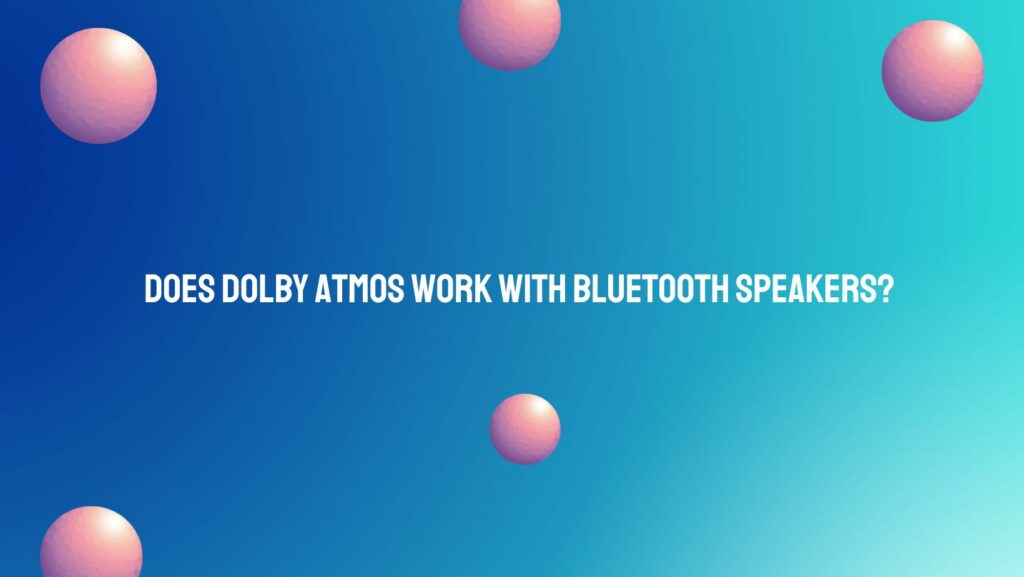In the ever-evolving landscape of audio technology, Dolby Atmos has emerged as a revolutionary force, promising an immersive and three-dimensional sound experience. As enthusiasts explore the possibilities of this advanced audio technology, a common question arises: Can Dolby Atmos work seamlessly with Bluetooth speakers? In this article, we delve into the intricacies of Dolby Atmos and the compatibility of this groundbreaking technology with the convenience of Bluetooth speakers.
Understanding Dolby Atmos: Dolby Atmos, introduced by Dolby Laboratories, redefines the audio experience by adding a vertical dimension to sound. Unlike traditional surround sound systems that channel audio horizontally, Dolby Atmos allows sound to move freely around the listener in a three-dimensional space. This technology creates a more immersive and lifelike audio environment, making it a sought-after feature in home theaters, cinemas, and high-end audio setups.
Bluetooth Technology and Its Limitations: Bluetooth technology has become ubiquitous in the realm of wireless audio connectivity, providing convenience and versatility. However, it comes with certain limitations that impact the transmission and reproduction of high-quality audio. The most notable limitations include bandwidth constraints and compression, which may compromise the fidelity of the audio signal.
The Compatibility Question: Given the sophisticated nature of Dolby Atmos and the constraints of Bluetooth, it’s natural to question whether these two technologies can work harmoniously. The answer lies in the nuanced understanding of both technologies and the compromises that may be necessary for a satisfactory audio experience.
Bluetooth Codecs and Dolby Atmos: Bluetooth speakers utilize different audio codecs to compress and transmit audio data wirelessly. Popular codecs include SBC, AAC, aptX, and LDAC, each with varying levels of compression and audio quality. While Dolby Atmos is typically associated with lossless audio formats, Bluetooth codecs often employ lossy compression to reduce file size and facilitate efficient wireless transmission.
To bridge this gap, manufacturers have developed advanced codecs like aptX HD and LDAC, which offer higher bitrates and improved audio quality. These codecs can handle the demands of Dolby Atmos to a certain extent, but achieving a true, uncompressed Dolby Atmos experience remains a challenge.
Practical Considerations: For a Dolby Atmos experience that closely adheres to the intended audio quality, traditional wired setups or Wi-Fi-based solutions are recommended over Bluetooth. Wired connections ensure a stable and high-bandwidth transmission, minimizing the risk of audio degradation.
However, recognizing the popularity and convenience of Bluetooth, some audio enthusiasts may opt for compromises in audio quality for the sake of wireless freedom. Manufacturers continue to push the boundaries of Bluetooth technology, seeking innovative ways to enhance audio transmission and improve compatibility with advanced audio formats like Dolby Atmos.
Conclusion: In the quest for audio excellence, the compatibility of Dolby Atmos with Bluetooth speakers represents a delicate balance between technological advancements and practical considerations. While Bluetooth speakers have made great strides in delivering impressive sound quality, achieving the full potential of Dolby Atmos may still require a wired or Wi-Fi connection. As technology continues to evolve, it’s exciting to anticipate future innovations that may bring us closer to the seamless integration of Dolby Atmos and Bluetooth speakers.


